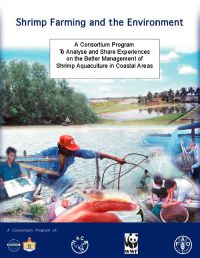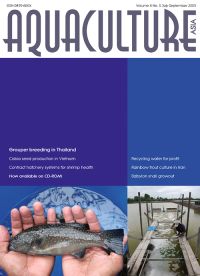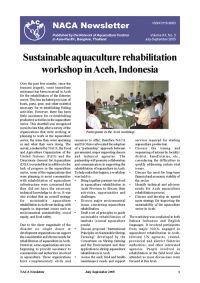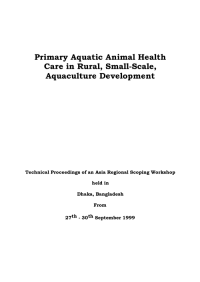This report provides details of the activities and outcomes of work conducted under the World Bank, NACA, WWF and FAO consortium program on Shrimp Farming and the Environment. The report synthesises the major findings of the consortium program from 1999-2002. It includes the outcome from a stakeholder workshop that discussed the program findings, hosted by the World Bank in Washington DC, in March 2002.
In this issue:
Asian Development Bank study on aquaculture and poverty. The consequences of converting to organic shrimp farming. Recycling water and making money with Artemia. Advances in the seed production of cobia Rachycentron canadum in Vietnam. Australian success with barramundi cod Cromileptes altivelis. Recent grouper breeding developments in Thailand. Application of probiotics in rotifer production systems. Contract hatchery systems. Rainbow trout culture in Iran. Spotted babylon Babylonia areolata growout in earthern ponds.
In this issue:
Sustainable aquaculture rehabilitation workshop in Aceh, Indonesia. STREAM policy briefs and better practice guidelines. 25 years of training in integrated fish farming. The Responsibilities of Leadership. A helping hand for those who needed it after the tsunami. An introduction to Mirza Koochek Khan Higher Fisheries Education & Training Centre, Iran. ACIAR funded regional project on shrimp health. Impact of aquatic animal health strategies. Farewell Sih Yang Sim. Welcome Koji Yamamoto.
This document is the technical proceedings of the Asia Regional Scoping Workshop on “Primary Aquatic Animal Health Care in Rural, Small-scale, Aquaculture Development,” held in Dhaka, Bangladesh from 27 - 30 September 1999. The objectives of the workshop were to review information on socio-economic impacts, risks of disease incursions and health management strategies in rural, small-scale aquaculture and enhanced fisheries programmes; and to identify potential interventions for their better health management and appropriate followup actions.
Este reporte da detalles de las actividades y resultados del trabajo conducido bajo el Programa en Consorcio del Banco Mundial, NACA, WWF y FAO sobre “Cultivo de Camarón y el Medio Ambiente”. Este reporte sintetiza los resultados más importantes del programa del consorcio desde 1999 hasta marzo de 2002. Incluye los resultados de los talleres de usuarios que discutieron los resultados del programa, auspiciados por el Banco Mundial en Washington, DC, en marzo de 2002.




